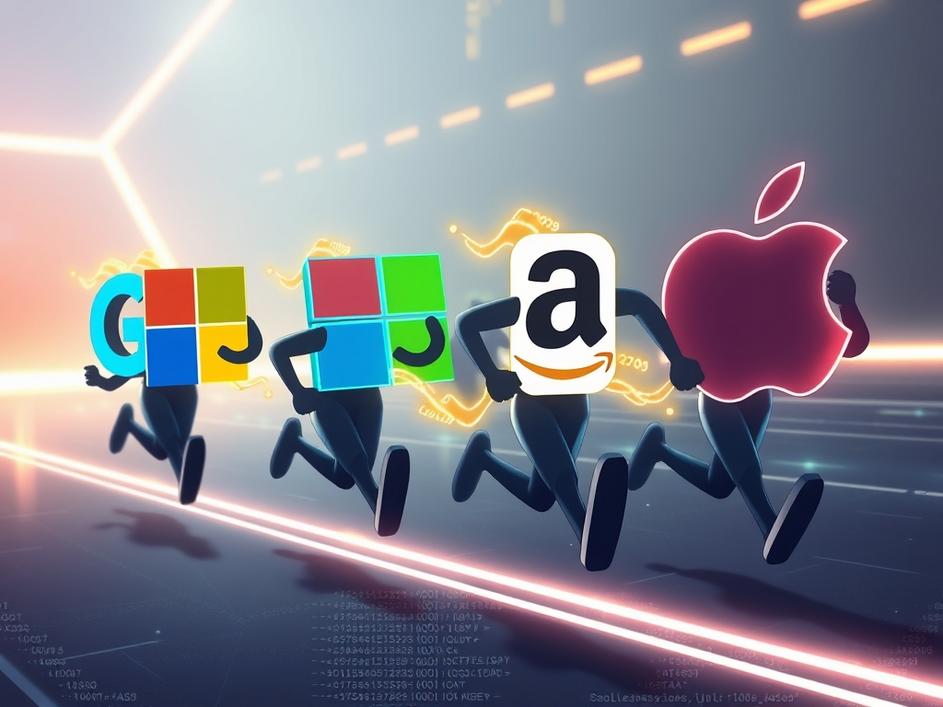


We are a digital agency helping businesses develop immersive, engaging, and user-focused web, app, and software solutions.
2310 Mira Vista Ave
Montrose, CA 91020
2500+ reviews based on client feedback

What's Included?
ToggleWe hear it everywhere: AI is the future. Every big tech company wants to be at the forefront, pouring billions into research, development, and the powerful hardware needed to make it all happen. It feels like a race, a frantic sprint where no one wants to come in second. But beneath all the hype and the huge investment announcements, there’s a subtle, almost sneaky problem brewing. It’s a situation that looks great on the surface for innovation, but it might just be trapping these tech giants in a costly cycle they can’t easily break free from. They’re spending huge sums, not just to win, but often just to keep up, creating a strange kind of paradox in the high-stakes world of artificial intelligence.
Imagine two friends, both arrested for a crime they committed together. They are questioned separately and offered a deal: if one testifies against the other, they go free while their friend gets a long sentence. If both stay quiet, they both get a short sentence. But if both testify against each other, they both get a medium sentence. The best outcome for both of them together is to stay quiet. But individually, each person has a strong reason to betray the other, just in case their friend betrays them first. This is the classic “prisoner’s dilemma,” and it’s a pretty good way to understand what’s happening with Big Tech and AI. Each company knows that if they all scaled back their AI spending, they’d likely all be better off, maybe even making more money. But if one company slows down, and another speeds up, the slow one risks being left in the dust. So, everyone keeps spending, even if it feels a bit unsustainable, because the fear of falling behind is just too great.
Think about the biggest names in tech: Google, Microsoft, Amazon, Meta, Apple. They are all deeply invested in AI. Google has its DeepMind and Bard (now Gemini), Microsoft is heavily partnered with OpenAI, Amazon is pushing AWS AI services and Alexa, Meta is investing massively in its own Llama models and AI-powered metaverse visions, and Apple is quietly integrating AI deeper into its devices. Each of these companies sees AI as crucial for their next phase of growth, for improving their products, and for attracting new users. They’re not just buying fancy software; they’re hiring top AI talent (which costs a fortune), building vast data centers, and snapping up every advanced chip they can get their hands on. It’s a land grab, but the land is digital, and the currency is innovation and sheer processing power.
The price tag for this AI race is truly staggering. We’re talking billions upon billions of dollars. A huge chunk of this goes into specialized chips, like those made by Nvidia, which are essential for training complex AI models. These chips are expensive, power-hungry, and in high demand. Then there’s the energy needed to run these massive computing clusters – think about the electricity bills for data centers the size of small towns. And let’s not forget the human cost: the brightest minds in AI are commanding sky-high salaries, creating an arms race for talent that only the richest companies can afford to play. It’s a continuous investment with no clear end in sight, putting pressure on profit margins and raising questions about how long this level of spending can truly be maintained without a major shift in how these companies operate or generate revenue from their AI ventures.
From my viewpoint, this AI spending spree is a double-edged sword. On one hand, it’s driving incredible innovation. We’re seeing AI capabilities advance at a breathtaking pace, leading to new tools and services that were unthinkable just a few years ago. But on the other hand, it feels like a bit of a high-stakes gamble. Is all this investment going to pay off? Or are we heading towards a point where the spending outpaces the actual returns, creating a kind of AI bubble? It’s like everyone is running a marathon, but no one wants to be the first to slow down, even if their legs are burning. This constant pressure to outspend and outperform could lead to market consolidation, where only a few behemoths can truly afford to compete. Smaller players might struggle to keep up, limiting variety and choice in the long run. It also forces companies to chase the next big thing, sometimes at the expense of careful, sustainable development.
So, where does this leave us? Big Tech is caught in a fascinating, expensive bind. The “prisoner’s dilemma” perfectly illustrates why they continue to spend billions on AI, even if a collective pause might benefit them all. The fear of being outmaneuvered by a competitor is a powerful motivator, stronger than the desire to optimize collective profits. This constant, intense competition guarantees continued rapid advancements in AI, pushing boundaries we didn’t even know existed. But it also means consumers and investors need to watch closely. While innovation thrives, the sheer scale of the investment raises questions about long-term sustainability, potential market shifts, and whether this high-stakes game will ultimately lead to revolutionary products for everyone, or just a few very rich, very powerful tech companies.



Leave a reply